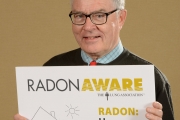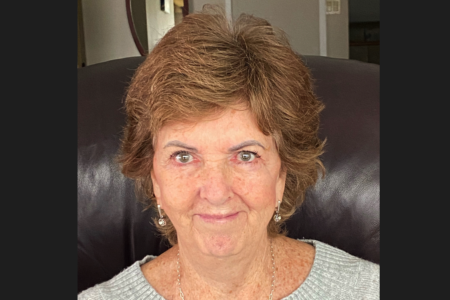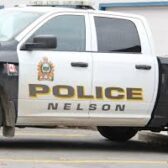November is Lung Month: protect your lungs, get your home tested
Exposure to colourless, odourless radon gas is the leading cause of lung cancer after smoking. Radon is a radioactive gas that comes from the breakdown of uranium in the ground. It can seep undetected into homes, schools, workplaces and other buildings through cracks in the walls or foundation.
“Radon gas is accountable for up to 16 per cent of lung cancers. We suggest all BC homeowners test their home’s radon levels,” says Michael Jessen, Volunteer BC Lung Association Director for Nelson.
When radon is released into the atmosphere, it gets diluted. But if it finds its way into your home it can accumulate to high levels, and that’s when it can become dangerous.
Being exposed to high doses of radon over a long period of time is a serious lung cancer risk.
“Should British Columbians be concerned about radon exposure? Yes, absolutely. Should they panic? No,” says Britt Swoveland, Provincial RadonAware Coordinator for the BC Lung Association.
“Virtually every house in BC contains some radon. The question is, how much? The only way to know for certain, is to test.”
Measured in becquerels per cubic metre (Bq/m3), Health Canada recommends home radon levels not exceed a safety threshold of 200 (Bq/m3).
As there is no known safe level of exposure, the BC Lung Association recommends making every effort to minimize home radon levels.
“One house can have radon levels next to zero while the house next door can be off the charts,” continued Swoveland.
“And if your radon levels are high, it’s not hard to fix. A certified radon mitigation professional can reduce radon levels in most homes by more than 80 per cent for about the same cost as other common home repairs, rarely more than $1,500 to $3,000.”
Frequently Asked Questions:
- What is radon? Radon is an odourless, colourless radioactive gas produced by the natural breakdown of uranium in the soil. It leaks into homes through cracks in the foundation or walls and gaps around pipes.
- How does radon cause lung cancer? Radon particles can get trapped deep in the lungs when inhaled and can cause tissue damage that leads to lung cancer over time. One in 20 people exposed to high levels of radon over a long period of time are at risk of developing lung cancer. If you are also a smoker, the risk increases to one in three.Up to 16 percent of lung cancer deaths in Canada are linked to radon exposure.
- What can I do? Start with a home radon test. Home testing is easy and relatively inexpensive. A radon test kit costs around $30 and is available from hardware stores and online through the BC Lung Association’s website: RadonAware.ca. The test consists of leaving a testing device exposed to the air on the lowest level of your home that you regularly use for at least four hours a day (basement or ground floor) for at least three months. Then you send it in to the testing company as directed and wait for your results.
- What do radon test results mean? Measured in becquerels per cubic metre (Bq/m3), Health Canada recommends home radon levels not exceed a safety threshold of 200 (Bq/m3). As there is no known safe level of exposure, the BC Lung Association recommends making every effort to minimize home radon levels.
- How do I fix a radon problem? The term used for removing radon in a home is ‘mitigation.’ If your home tests high for radon, the best method for reducing levels will depend on how radon enters your home and the design of your home. We recommend hiring a certified radon mitigation professional. A fix usually costs between $1,500 and $3,000, but costs vary depending on the size and design of your home.
To order a radon test kit, to find a certified radon mitigation and learn more about how radon affects your lung health, go to the BC Lung Association’s website RadonAware.ca or call the BC Lung Association toll-free at 1-800-665-5864.
Photo caption: Michael Jessen, Volunteer BC Lung Association Director for Nelson, encourages BC homeowners to test for radon gas. Exposure to the colourless, odourless radioactive gas is the leading cause of lung cancer after smoking.


























